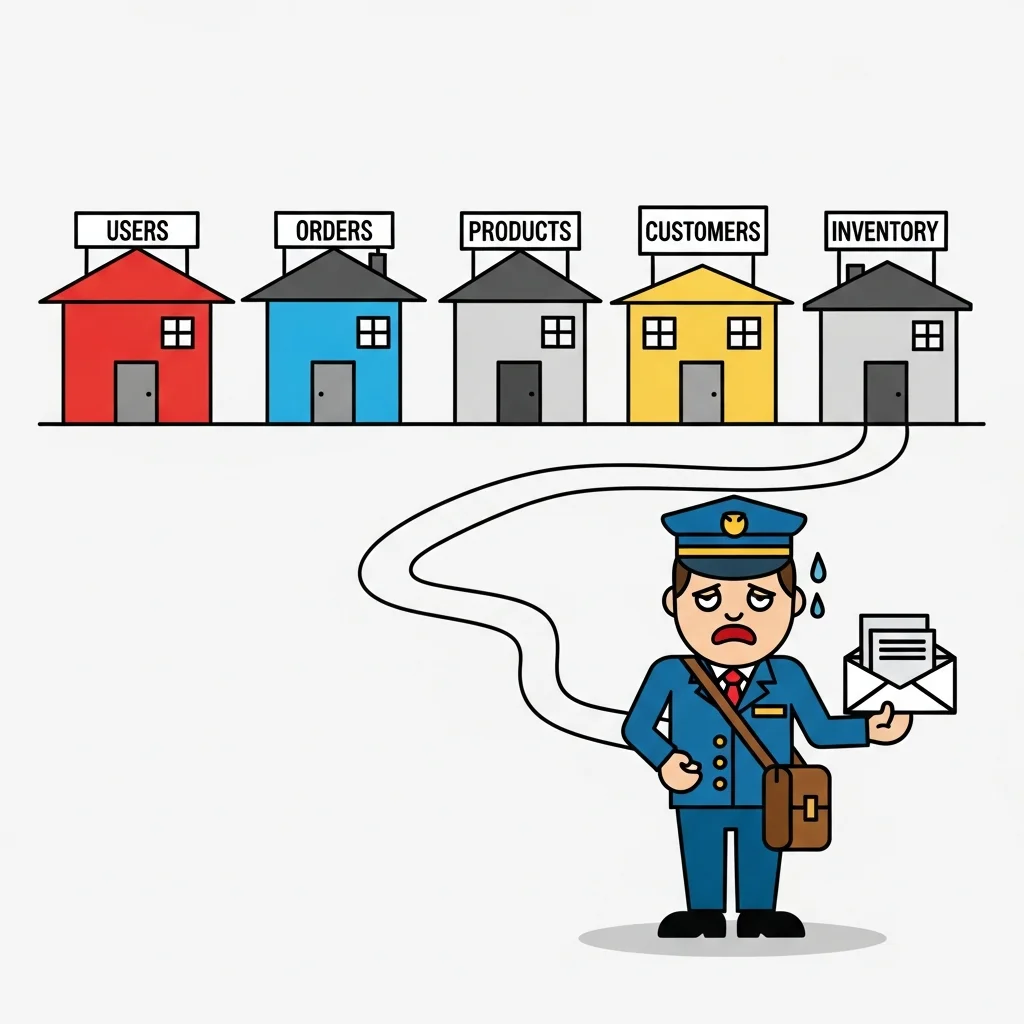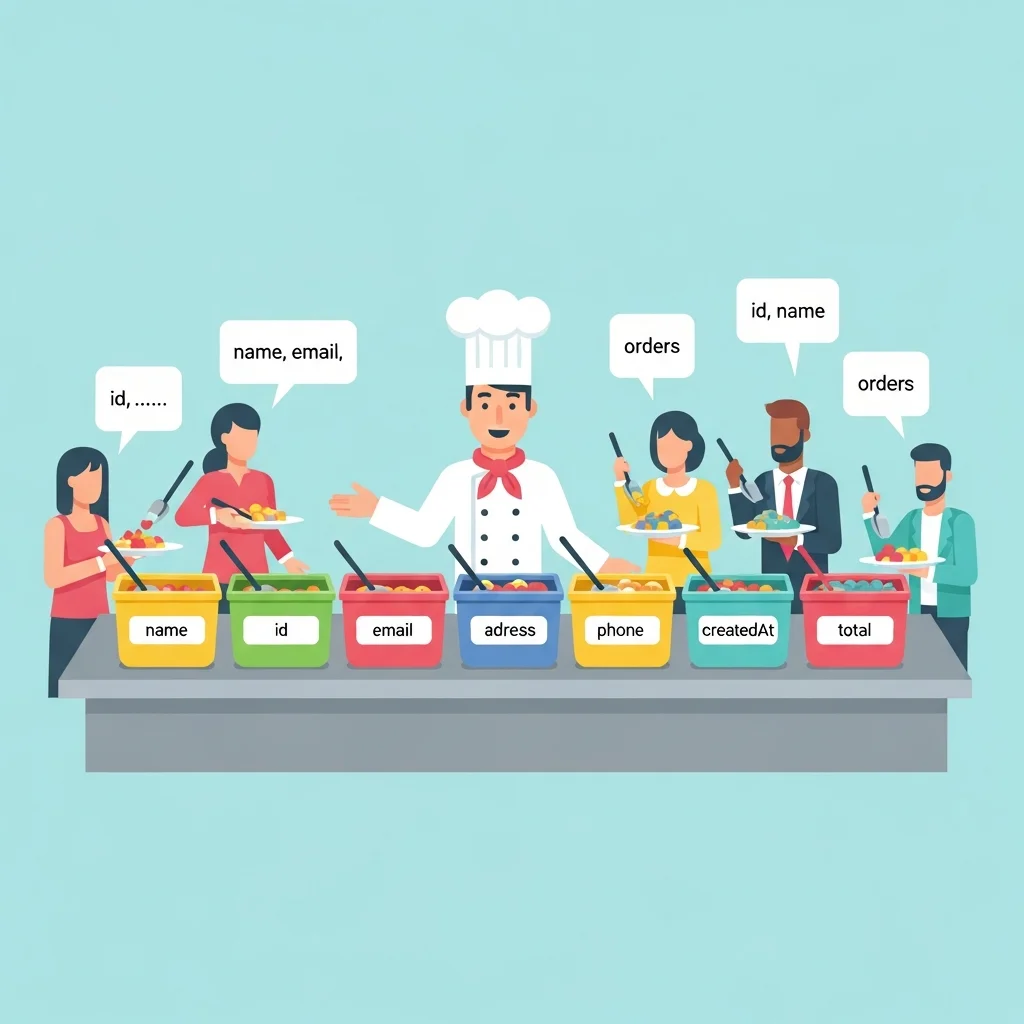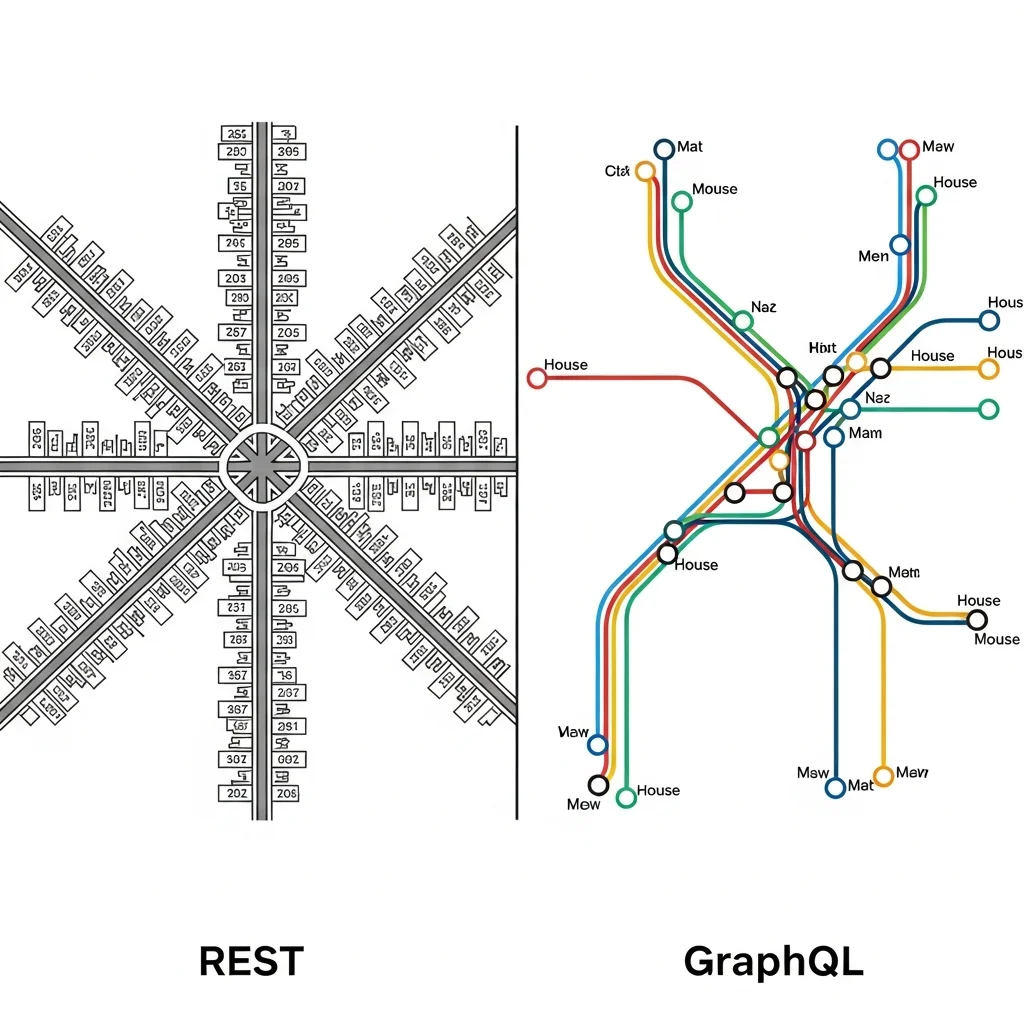REST API vs GraphQL overview
When is a REST API the right choice and when is GraphQL a better fit as the API layer on top of your data and services? This question pops up in almost every modern software project. Both technologies are mature, widely supported and battle-tested, yet they differ in design principles, query model, performance profile and operational complexity.
In this article REST and GraphQL are defined step by step and compared. The text covers the history and architectural principles, the way clients request and mutate data, the impact on caching and security, typical pitfalls in production environments and common adoption strategies in larger organisations.
By the end of the article readers will have a neutral, encyclopaedic overview of REST APIs and GraphQL, including clear definitions of core concepts such as resources, endpoints, schema, resolvers, overfetching and underfetching, enabling better informed architectural decisions.
Clear definitions of REST API and GraphQL and their architectural foundations
Explanation of the difference in data retrieval, endpoints, payloads and versions
Overview of performance aspects, caching, security and tooling
Explanation of hybrid scenarios in which REST and GraphQL coexist
What is a REST API
A REST API is a web API designed according to the principles of Representational State Transfer, an architectural style that uses HTTP as transport and a uniform interface. In this model data are modelled as resources, each with a unique URL, and standard HTTP methods such as GET, POST, PUT and DELETE are used to read or modify those resources.
In a typical REST API functionality is spread across multiple endpoints, for example "/users", "/users/{id}" and "/orders". The data format is usually JSON, although XML and other formats are theoretically possible. Each resource represents a concept from the domain, such as a user, product or order, and contains a representation of the state of that object.
REST emphasises stateless communication. That means every request must contain enough information for the server to handle it without relying on server-side session state. This allows servers to scale horizontally with ease because each request is processed independently.
Many modern web and mobile applications use REST to expose back-end services, partly due to the broad adoption, extensive tooling, good browser support and the simplicity of the model. REST is often combined with HTTP caching mechanisms such as ETags and cache headers, which can improve performance, especially for frequent read operations.
What is GraphQL
GraphQL is a query language and runtime for APIs designed to let clients request exactly the data they need in a single call. Instead of multiple endpoints with fixed responses, GraphQL works with one endpoint and a strongly typed schema that describes which objects and fields are available and how they relate to each other.
In GraphQL the schema defines types, fields, relationships and operations. Clients send queries to the GraphQL endpoint in a special textual syntax. The server uses resolvers to fetch the corresponding data for every field in the query. The result is JSON with exactly the requested structure.
GraphQL distinguishes three main operation types. Queries read data, mutations change data and subscriptions deliver real-time updates via a persistent connection, usually based on WebSockets. This separation makes API capabilities explicit and easy to explore through introspection, a mechanism that allows clients to query the schema itself.
A key feature of GraphQL is that the client determines the shape of the response. This makes it possible to fetch complex object graphs, for example a user, the user orders and the related products, in a single call without multiple separate HTTP requests. It reduces overfetching, retrieving more data than needed, and underfetching, retrieving too little data requiring extra calls.
A brief yet visual explanation of GraphQL and how it differs from REST can be found in many recent videos, for instance an explainer video on YouTube.
Architectural differences between REST API and GraphQL
Although REST API and GraphQL share the same goal of making data available over the web, they differ fundamentally in how they model structure and interaction. REST focuses on resources with their own URLs and fixed representations per endpoint. In GraphQL the schema is central, with types and fields that act as a contract between client and server.
In REST every use case often leads to a new endpoint or an extended response of an existing endpoint. For example, to retrieve a user and the user orders an extra endpoint such as "/users/{id}/orders" may be required, or an extension of "/users/{id}" with an additional embed. In GraphQL this need is solved by adding extra fields or relationships to the query while the underlying schema can remain the same.
GraphQL centralises all requests to a single HTTP endpoint, often "/graphql". The server parses the query, validates it against the schema and calls a resolver for each field to fetch the actual data, for example from databases or other APIs. This introduces an extra interpretation layer compared with REST, where the URL directly maps to a controller or handler.
Versioning in REST is often implemented by publishing new versions of endpoints, such as "/v1/users" and "/v2/users". In GraphQL versioning is usually called schema evolution. Fields can be added as long as existing fields remain backwards compatible, while obsolete fields are marked as deprecated. This approach can reduce versions but demands strict schema governance.
Performance optimisation follows a different route as well. In REST endpoint caching and HTTP infrastructure such as CDNs are common. GraphQL more often uses application-level caching, for example at field or resolver level, and sometimes persisted queries where the actual query is stored on the server and the client only sends a hash. This gives flexibility but requires extra operational measures.
Use cases, benefits and considerations
REST APIs are well suited to many scenarios in which simple, easily cacheable resources are exposed and where stability, predictability and broad compatibility are important. Think of public APIs, integrations with external parties and back-end services whose clients change infrequently. The simplicity of HTTP methods and clear URLs makes debugging and monitoring relatively straightforward.
GraphQL is often chosen in environments with complex front-ends, multiple client types or rapidly changing UI requirements. An example is a single page application or mobile app that needs different combinations of fields for each screen. The ability to request only the relevant data in one call helps to reduce network traffic and optimise load time, especially on mobile networks.
There are also points of attention. In REST overfetching is a known issue when endpoints return more data than the client actually uses. Underfetching occurs when a client has to call multiple endpoints to collect all required data. GraphQL largely addresses this with flexible queries, but introduces its own risks, such as very heavy queries that burden the server and more complex authorisation at field level.
For security REST often relies on authorisation per endpoint and HTTP method, combined with tokens and scopes. GraphQL often requires more fine-grained policies, for instance at type or field level, because a single query can access a large amount of related data. Query validation, depth and complexity limits and query whitelists are therefore regularly employed.
In modern systems hybrid models are common. Back-end services provide internal or external REST APIs, while a separate GraphQL layer is used as an aggregator for front-end clients. This GraphQL gateway combines data from multiple REST or database sources into a single uniform schema. It enables step-by-step adoption without replacing existing REST infrastructure in one go.

How does a REST API fundamentally differ from GraphQL
A REST API models data as resources with their own URLs and uses HTTP methods to manage those resources. GraphQL models data as a schema with types and fields and uses one endpoint where clients specify the fields they need. The core difference is that REST gives the server more control over the shape of the response, whereas GraphQL puts most of that control in the hands of the client.
Why is GraphQL often seen as a solution to overfetching and underfetching
GraphQL allows clients to specify exactly which fields of which objects are needed with every request. The response is therefore precisely aligned with the usage, without extra fields. Underfetching is minimised because one query can combine multiple related objects that in a REST model are often spread across different endpoints. In practice this reduces both payload size and the number of required requests.
Is GraphQL always faster than a REST API
GraphQL is not automatically faster. In some scenarios it reduces network traffic because fewer separate requests are needed and payloads are smaller. At the same time it introduces an interpretation layer and a complex query can touch multiple back-ends, which adds processing time. Performance therefore strongly depends on query design, resolver implementation, caching strategy and the characteristics of the underlying data sources.
How does caching work in REST APIs compared with GraphQL
REST APIs integrate closely with HTTP caching. Responses can include cache headers, ETags and status codes that browsers and CDNs use automatically. GraphQL responses are harder to cache generically at infrastructure level due to the flexible query structure. Therefore GraphQL more often relies on application-level caching, for example per field or resolver, or via persisted queries and specific client cache strategies.
When is a REST API more suitable than GraphQL
A REST API is usually the better choice for relatively stable use cases, clear resource boundaries and scenarios where broad compatibility and straightforward integration have priority. Think of partner integrations, public developer APIs or back-end systems that mainly perform standard CRUD operations. In such contexts the simplicity and existing HTTP infrastructure often outweigh the extra flexibility that GraphQL provides.
Can an organisation use REST and GraphQL at the same time
Yes, that is common in practice. A frequent pattern is that existing microservices and back-ends expose a REST API, while a separate GraphQL layer acts as an aggregator or facade. Front-ends then talk to the GraphQL layer, which in turn fetches data from various REST services. This allows GraphQL to be introduced gradually without replacing existing REST endpoints and at the same time harnesses the advantages of both models.
How does security differ between REST API and GraphQL
In REST authorisation is often arranged per endpoint and HTTP method, for example through scopes per route. GraphQL requires extra attention because a single query can touch multiple types and fields. Security is therefore often implemented at schema and field level, with rules that determine who may query or mutate which fields. In addition measures such as query whitelisting, depth and complexity limits and logging of query patterns are used to reduce misuse.
Is GraphQL suitable for every type of back-end
GraphQL is conceptually agnostic to the data source and can sit on top of relational databases, NoSQL stores or existing REST APIs. However it is not ideal in every situation. Systems with extremely simple data models or very limited use cases often gain little from the extra complexity of a GraphQL layer. In real-time scenarios or event-driven systems GraphQL subscriptions can be useful, but specialised protocols or message brokers may sometimes align better with the desired architecture.




